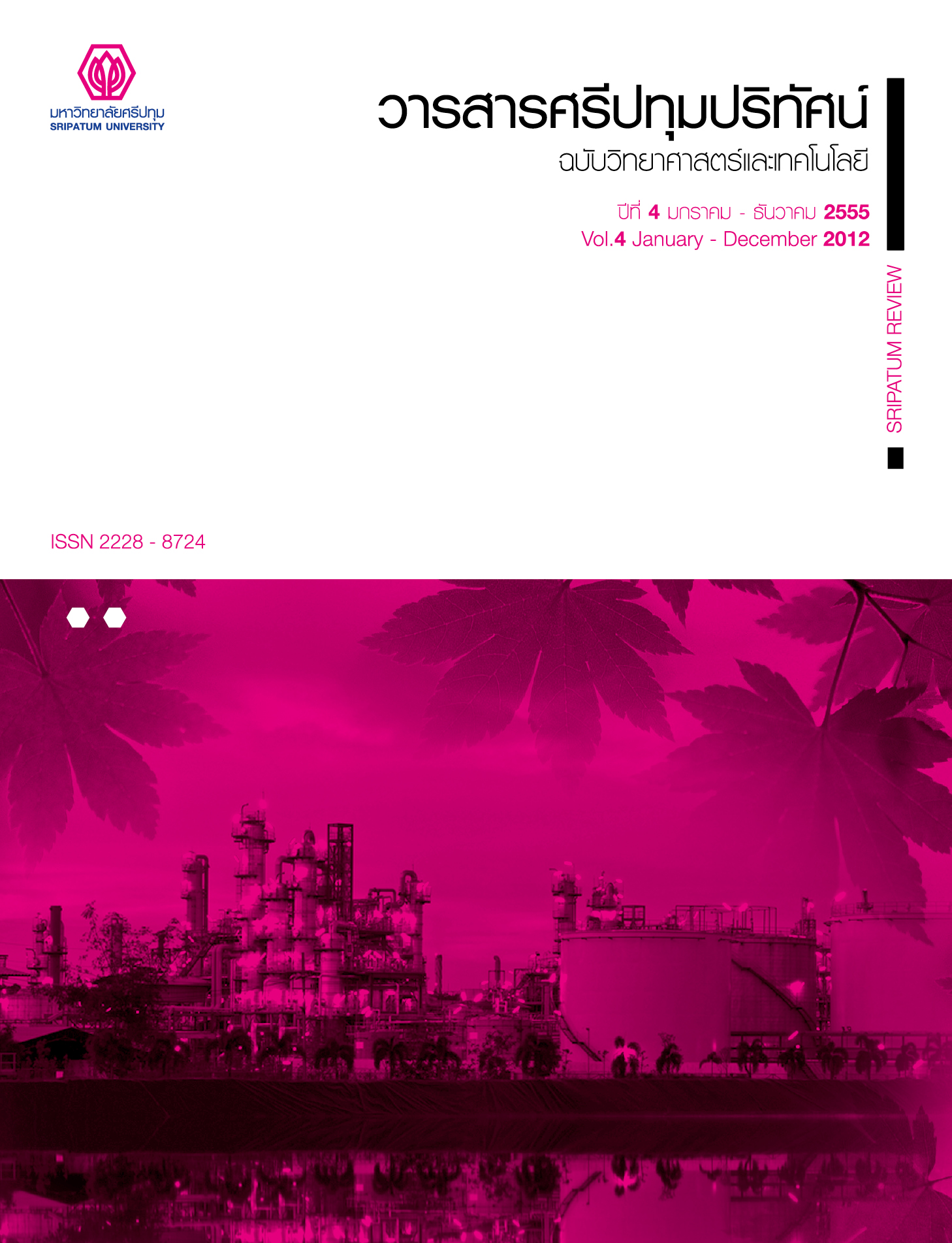CONCENTRATION OF 1,2,4 TRIMETHYLBENZENE IN WORKPLACE ENVIRONMENT OF PAINT INDUSTRY
Main Article Content
Abstract
The workers’ exposure of 1,2,4 trimethylbenzene at Mixing - tin and Packaging section of industrial paint was examined. Personal characteristic of subject was collected by questionnaire. 1,2,4 Trimethylbenzene at workplace was collected by coconut charcoal tube and personal sampling pump at a flow rate of 0.01- 0.20 l/min. The air samples were collected from 08.00 to 12.00 a.m. and 01.00 to 05.00 p.m. The air samples were analyzed by gas chromatography - flame ionization detector. The concentrations of 1,2,4 trimethylbenzene at mixing- tin section ranged from 0.001to 2.738 ppm with an average of 1.094 ppm. The concentrations of 1,2,4 trimethylbenzene at packaging section ranged from 0.001 to 5.613 ppm with an average of 1.446 ppm. The exposure concentrations of 1,2,4 trimethylbenzene at mixing- tin section and packaging section were not significantly different (p <0.05).
Article Details
References
Fukaya, Y., Saito, I., Matsumoto, T., Takeuchi, Y., & Tokudome, S. 1994. “Determination of 3,4-dimethylhippuric acid as a biological monitoring index for trimethylbenzene exposure in transfer printing workers.” Int Arch Occup Environ Health, 65(5): 295-297.
Ichiba, M., Hama, H., Yukitake, S., Kubota, M., Kawasaki, S., & Tomokuni, K. 1992. “Urinary excretion of 3,4-dimethylhippuric acid in workers exposed to 1,2,4-trimethylbenzene.” Int Arch Occup Environ Health. 64(5): 325-327.
IPCS. 1996. “Environmental Health Criteria 187: White Spirit (Stoddard Solvent).” World Health Organization. Retrieved August 7, 2011.
Jarnberg, J., & Johanson, G. (1999). “Physiologically based modeling of 1,2,4-trimethylbenzene inhalation toxicokinetics.” Toxicol Appl Pharmacol, 155(3): 203-214.
Jarnberg, J., Stahlbon, B., Johanson, G., & Lof, A. 1997. “Urinary excretion of dimethylhippuric acids in humans after exposure to trimethylbenzenes.” Int Arch Occup Environ Health, 69(6): 491-497.
Kostrzewski, P., Wiaderna-Brycht, A., & Czerski, B. 1997. “Biological monitoring of experimental human exposure to trimethylbenzene.” Sci Total Environ, 199(1-2): 73-81.
Manini, P., Andreoli, R., & Niessen, W. 2004. “Liquid chromatography-mass spectrometry in occupational toxicology: a novel approach to the study of biotransformation of industrial chemicals.” J Chromatogr A, 1058(1-2): 21-37.
Ontario. 2007. “1,2,3-Trimethylbenzene 1,2,4-Trimethylbenzene 1,3,5-Trimethylbenzene.” Ontario Air Standards For Trimethylbenzenes: Retrieved August 7, 2011.
U.S. EPA. 1994. “Chemicals summary for 1,2,4-Trimethylbenzene” U.S. Environmental Protection Agency. Retrieved March 11, 2012.

